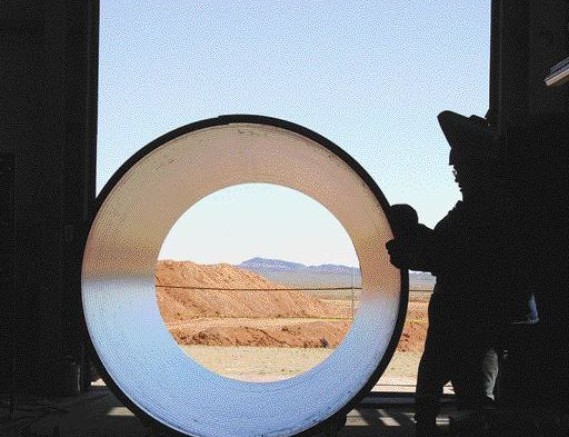Ivanhoe Mines (IVN-T, IVN-N) wowed the market in mid-October, by laying the groundwork for a partnership with Rio Tinto (RTP-N, RIO-L) to get its massive Oyu Tolgoi copper-gold project in southern Mongolia into production.
Rio Tinto could invest as much as US$1.5 billion in Ivanhoe and, if the deal goes through as proposed, the London-based mining titan would wind up with roughly one-third of Ivanhoe.
Rio Tinto’s investment will be structured in three steps. First, Rio Tinto will buy 37.1 million Ivanhoe shares for US$303 million, to own almost 10% of Ivanhoe. Second, Rio Tinto can purchase another 46.3 million shares for US$388 million, boosting its interest in Ivanhoe to nearly 20%. Finally, Rio Tinto will be granted warrants for a further 92 million Ivanhoe shares. If Rio Tinto exercises all of them, it would spend another US$808 million. Rio Tinto also has the right to buy an additional 6.65% share of Ivanhoe on the open market, to bring its total stake in the company to 40%.
On Oct. 18, news of the deal shot Ivanhoe shares up nearly 32% or $2.33 to $9.76 on volume of more than 20 million shares traded in Toronto.
The partnership addresses the market’s concern on the engineering and financing side of the project. When Ivanhoe announced plans to mine Oyu Tolgoi’s Hugo Dummett deposit by the relatively expensive and complex block-caving method (where controlled explosions result in the downward collapse of the orebody), questions arose as to the feasibility of a junior undertaking such a huge enterprise.
But in Rio Tinto, Ivanhoe has found a potential partner with some of the best mining engineering experience in the business, along with some of the deepest pockets.
The partnership would reunite Ivanhoe chief executive John Macken with the Rio team he worked with while at Freeport-McMoRan Copper & Gold’s (FCX-N) giant Grasberg mine in Indonesia. That project employs block-caving methods.
While the deal brings confidence to the operational side of the project, its effect on the political side is still a question mark.
“I wasn’t surprised that the deal was done, but I was certainly surprised by the timing of it,” says Salman Partners analyst Raymond Goldie. “The smaller companies usually get better deals from the government than the bigger ones do.”
Ivanhoe has been in protracted negotiations with the Mongolian government over an investment agreement. That agreement is so vital to the project’s advancement of the project that Rio will withhold roughly 75% of its full investment (US$1.5 billion, plus the value of what the 6.65% share of Ivanhoe would fetch on the open market) until it is negotiated.
But BMO Capital Markets analyst Victor Lazarovici doesn’t think Rio Tinto is taking on undue risk, even with such political uncertainty.
“Rio is very large and highly diversified and the risks are reasonable in the context of a sixty-billion-dollar (US) company,” Lazarovici says.
Another analyst, who wants to remain unnamed, says the presence of Rio Tinto at Oyu Tolgoi should help in negotiations.
“The Mongolian government sees the world’s number two miner wanting to be at Oyu Tolgoi and that it has deep pockets and knows how to build it. It should enhance the probability that they’ll get the deal done,” he says.
Ivanhoe says Rio Tinto will immediately enter negotiations with Ivanhoe and the government.
If an agreement with the Mongolian government isn’t reached, Rio Tinto will be on the hook for roughly US$303 million. That amount gets Rio roughly 10% of Ivanhoe shares at US$8.18 per share.
As part of the pact, Ivanhoe has agreed to use at least 90% of the proceeds from Rio towards the development of Oyu Tolgoi. Also, project engineering, construction and operation will be handled jointly, by an Ivanhoe-Rio Tinto technical team.
Oyu Tolgoi has the capacity to turn out roughly 1 billion lbs. copper and 330,000 oz. gold annually.
In a press release, Rio touted its ability to bring “world-class operating and technical capability” to the project, and said it looked forward to negotiating with the Mongolian government.
“The Oyu Tolgoi project will represent a major investment in the country,” said Tom Albanese, Rio Tinto director of group resources. “It will result in increased local employment, the development of important infrastructure in the South Gobi region and can become a catalyst for regional social and economic development.”
Albanese is slated to join Ivanhoe’s board of directors.
Separately, Rio Tinto released its third-quarter results, which showed decreased copper production over the same period last year.
The company blames a scheduled smelter shutdown at Kennecott Utah Copper and an August strike at Escondida and for the decline.
While mined copper at Kennecott Utah was actually up for the quarter by 37% from the same period last year to roughly 69,000 tonnes, refined copper production fell by 19% to roughly 55,000 tonnes. The smelter is expected to reopen shortly.
In Chile at the Escondida copper mine — which is majority owned by BHP Billiton (BHP-N, BLT-L) — Rio Tinto’s share of mined copper fell by 20% from the same period last year to roughly 81,000 tonnes of mined copper.
Lower copper grades at the Grasberg mine — a result of mine sequencing –translated to a 65% decrease in Rio’s share of mined copper compared with the same period last year. In all, Rio’s share of copper was 8,300 tonnes. Grasberg is operated by Freeport- McMoRan.
Lazarovici says decreased copper production in the quarter was not related to the move to partner with Ivanhoe at Oyu Tolgoi.


Be the first to comment on "Rio Tinto throws weight behind Oyu Tolgoi"